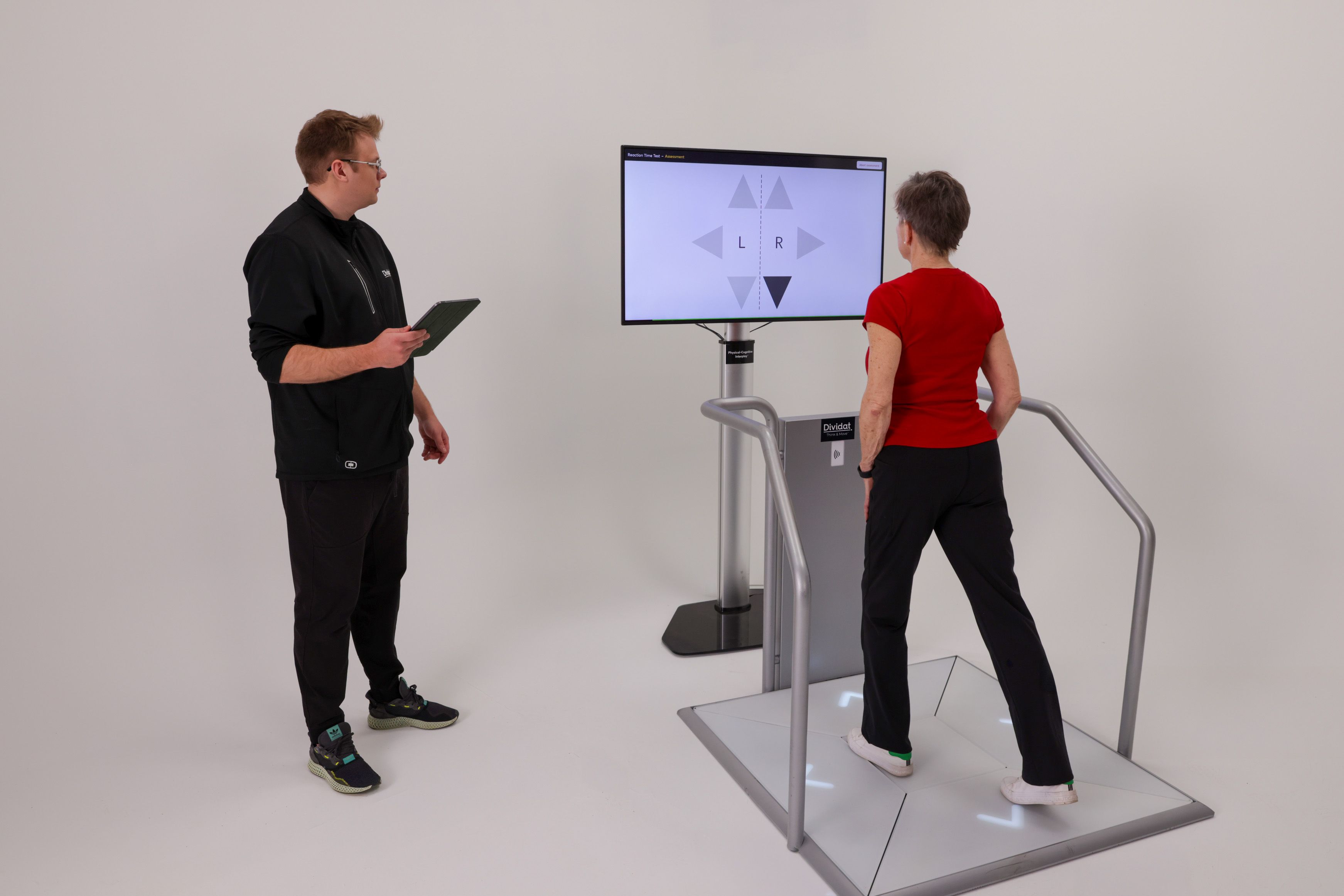news
In Episode 17 of our Think & Move video series, we explored how the Go-NoGo Assessment on the Dividat Senso challenges impulse control — the brain’s ability to decide when to act and when to hold back. It’s a key function in everyday life, helping us navigate decisions with speed and precision.
Now, in Episode 18, we’re continuing that journey by looking at what happens after the decision is made — how quickly and accurately the body responds once the brain gives the green light.
Because it’s not just about if we move, but how we move — and how evenly we can do so across both sides of the body.
In this episode, we dive into the Reaction Time Test, a standardized assessment that not only captures the speed of motor response, but also highlights differences between the right and left sides of the body. These differences, or asymmetries, can offer valuable insight into the effects of illness, injury, or inactivity, and how the brain and body are working together (or not) in real time.
Why Asymmetry Matters
Over time, neurological conditions like stroke, Parkinson’s disease, cerebral palsy, or even incomplete spinal cord injury can cause one side of the body to react or move differently than the other. Similarly, recovering from injuries—like an ACL reconstruction—requires rebalancing strength and coordination across both legs.
This is where the brain and body connection comes into play.
It’s not just about how fast your muscles react. It’s also about how fast your brain processes a signal, decides how to move, and sends the command to the correct limb. The Dividat Senso captures this critical interaction through its Reaction Time Test.
What the Reaction Time Test Measures
Using visual cues (like a black triangle showing which direction to step and with which foot), the Senso platform records the time—down to the millisecond—between stimulus and response.
Each step tells a story.
Which side reacts faster?
Is there a significant delay on one side?
Are those differences improving with training or therapy?
The Senso doesn’t just give a number. It provides a Limb Symmetry Index, offering insight into both motor performance and cognitive processing—essentially, what’s going on under the hood.
Turning Data Into Action
The beauty of a standardized test like this is that it offers a baseline—a clear starting point. From there, progress can be measured and training programs adjusted based on real performance data.
In short, the Reaction Time Test doesn’t just help you see the differences. It helps you change them.
Watch Episode 18 Now
See the Reaction Time Test in action and learn how milliseconds can reveal meaningful insights into movement, symmetry, and cognitive function.
Missed our last episode? Catch up on Episode 17: Training the Brain with Go-NoGo
Ready to see how the Dividat Senso can transform assessment and training?
Schedule a personalized demo and explore how real-time cognitive and physical data — combined with fun, interactive games — can empower your community or practice to achieve better outcomes.
